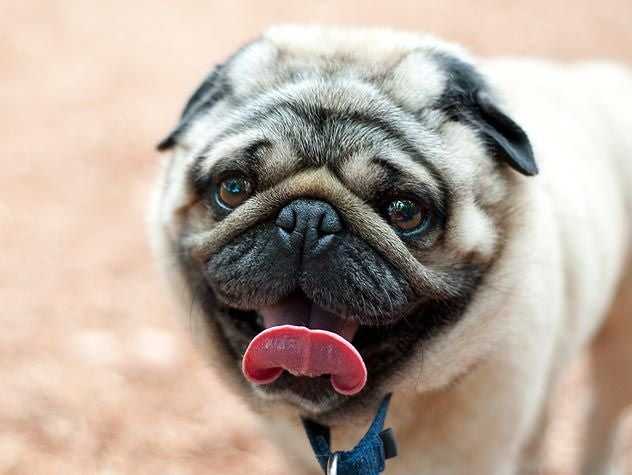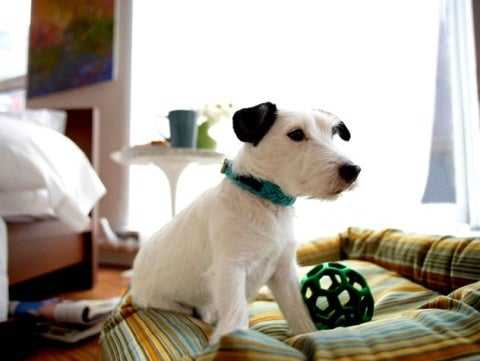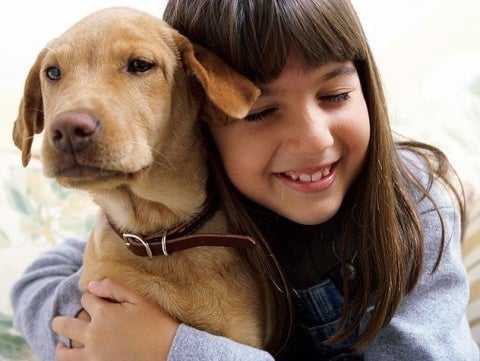Dog Adoption Tips – Bringing Home a New Rescue Dog

Bringing home a shelter dog that you adopt may be a rescued stray or a dog that someone has voluntarily surrendered for adoption.
Whether he was born in the bushes behind the laundromat or an adolescent abandoned on the streets by his once-upon-a-time owner, the streetwise stray can be a real challenge to incorporate into your life. The famous “he followed me home, can I keep him, Mom?” canine is a special animal that needs time and space, patience, and understanding.
The first few days in your home are special and critical for a pet. Your new dog will be confused about where he is and what to expect from you. Setting up some clear structure with your family for your dog will be paramount in making as smooth a transition as possible.
Bringing a puppy home, they need more than just a bed and a food bowl to thrive. They also need constant care and attention. While a puppy's first night at home may require a lot of work initially, it’s well worth the effort down the road. Establishing good habits in those first weeks will lay the groundwork for a lifetime of happiness for you and your dog. Remember, you have a responsibility to help your puppy grow into a happy and healthy dog. Here are some tips for puppy care to help first-time dog owners get started:


Before You Bring Your Dog Home:
- Determine where your dog will be spending most of his time. Because he will be under a lot of stress with the change of environment (from a shelter or foster home to your house), he may forget any housebreaking (if any) he’s learned. Often a kitchen will work best for easy clean-up.
- If you plan on crate training your dog, be sure to have a crate set up and ready to go for when you bring your new dog home. Find out more about crate training your dog.
- Dog-proof the area where your pooch will spend most of his time during the first few months. This may mean taping loose electrical cords to baseboards; storing household chemicals on high shelves; removing plants, rugs, and breakables; setting up the crate, and installing baby gates.
- Training your dog will start the first moment you have him. Take time to create a vocabulary list everyone will use when giving your dog directions. This will help prevent confusion and help your dog learn his commands more quickly. Not sure which commands to use? Check out How to Talk to Your Dog.
- Bring an ID tag with your phone number on it with you when you pick up your dog so that he has an extra measure of safety for the ride home and the first few uneasy days. If he is microchipped, be sure to register your contact information with the chip’s company, if the rescue or shelter did not already do so.
First Day:
- We know moving is stressful — and your new dog feels the same way! Give him time to acclimate to your home and family before introducing him to strangers. Make sure children know how to approach the dog without overwhelming him. Go here for more on introducing dogs and children.
- When you pick up your dog, remember to ask what and when he was fed. Replicate that schedule for at least the first few days to avoid gastric distress. If you wish to switch to a different brand, do so over a period of about a week by adding one part new food to three parts of the old for several days; then switch to half new food, half old, and then one part old to three parts new. For more information about your dog’s diet, check out our section on Dog Nutrition.
- On the way home, your dog should be safely secured, preferably in a crate. Some dogs find car trips stressful, so having him in a safe place will make the trip home easier for him and you.
- Once home, take him to his toileting area immediately and spend a good amount of time with him so he will get used to the area and relieve himself. Even if your dog does relieve himself during this time, be prepared for accidents. Coming into a new home with new people, new smells and new sounds can throw even the most housebroken dog off-track, so be ready just in case. Need more housetraining tips? Check out our Dog Housetraining section.
- From there, start your schedule of feeding, toileting, and play/exercise. From Day One, your dog will need family time and brief periods of solitary confinement. Don’t give in and comfort him if he whines when left alone. Instead, give him attention for good behavior, such as chewing on a toy or resting quietly
- For the first few days, remain calm and quiet around your dog, limiting too much excitement (such as the dog park or neighborhood children). Not only will this allow your dog to settle in easier, but it will also give you more one-on-one time to get to know him and his likes/dislikes.
- If he came from another home, objects like leashes, hands, rolled-up newspapers and magazines, feet, chairs, and sticks are just some of the pieces of “training equipment” that may have been used on this dog. Words like “come here” and “lie down” may bring forth a reaction other than the one you expect. Or maybe he led a sheltered life and was never socialized to children or sidewalk activity. This dog may be the product of a never-ending series of scrambled communications and unreal expectations that will require patience on your part.
- Keep him off balconies, elevated porches, and decks. Keep all cleaning supplies, detergents, bleach, and other chemicals and medicines out of the puppy’s reach, preferably on high shelves.
- Remove poisonous houseplants, such as amaryllis, mistletoe, holly, or poinsettia, or keep them in hanging baskets up high, where your puppy cannot reach them.
- Keep toilet lids closed, unplug electrical cords and remove them from the floor, and keep plastic bags and ribbons out of your puppy’s reach.
Following Weeks:
- People often say they don’t see their dog’s true personality until several weeks after adoption. Your dog may be a bit uneasy at first as he gets to know you. Be patient and understanding while also keeping to the schedule you intend to maintain for feeding, walks, etc. This schedule will show your dog what is expected of him as well as what he can expect from you.
- After discussing it with your veterinarian to ensure your dog has all the necessary vaccines, you may wish to take your dog to group training classes or the dog park. Pay close attention to your dog’s body language to be sure he’s having a good time — and is not fearful or a dog park bully. If you’re unsure of what signs to watch for, check out this video on safety at the dog park.
- To have a long and happy life together with your dog, stick to the original schedule you created, ensuring your dog always has the food, potty time, and attention he needs. You’ll be bonded in no time! For more information on creating a feeding schedule for your dog visit How Often Should You Feed Your Dog?
- If you encounter behavior issues you are unfamiliar with, ask your veterinarian for a trainer recommendation. Select a trainer who uses positive reinforcement techniques to help you and your dog overcome these behavior obstacles.
- Bring your puppy to the veterinarian for regular checkups. Talk to your veterinarian about any signs of illness that you should watch out for during your puppy’s first few months.
- Ensure Your Puppy Receives Proper Nutrition. Your puppy also needs complete and balanced nutrition to help him grow properly. In fact, the first year of his life is critical in ensuring the proper growth of his bones, teeth, muscles, and fur. As a growing animal, he’ll require more calories than an adult dog. Read the labels, and find a food that has been specifically created to ensure the proper balance of protein and fat for a puppy. Check the food package for the recommended feeding schedule and serving size. Never feed your puppy bones, table scraps, or big snacks in between meals.

Responsibilities for the Parents of the Newly Adopted Dog:
Courtesy of Rondout Valley Kennels, Inc. (Sue Sternberg suesternberg.com)
- Never, ever leave a child alone with your new dog. Not even for a second to turn your head and answer the phone. The type of relationship we see on TV between children and dogs is a fantasy, and not a reflection of what real dogs can be like with children.
- No one in the family should be encouraging rough play, wrestling, or the dog to play with his mouth on human body parts or clothes. This is especially relevant when an adult member of the household plays with the dog in this manner, because when the child next excites the dog, the dog may be stimulated to play in the same rough manner, thereby putting the child at risk for injury.
- Your dog should be fed his meals in an area completely protected from and away from children, as much for a bit of peace and privacy as it is to prevent guarding behaviors. The dog should also be fed portions that are quickly finished, so there is nothing left in the bowl for the dog to linger over and guard. Empty bowls should be taken up and put away, so the dog won’t consider guarding the feeding area.
- Most children are not bitten by their own dog, but by a friend or neighbor’s dog. This means two things: watch your own dog closely when your child has a friend (or friends) over. Many dogs will tolerate a lot from their own family’s child, but not tolerate a visiting child. Visiting children often do not behave as well as, or may behave differently from your own children, and could bother or provoke your dog. Consequently, if your child’s friends have dogs, you need to, (as a responsible parent) go over and meet the friend’s dog BEFORE you allow your child to visit their house. It is a good idea to see the size and general nature of your child’s friend’s dog, and check to see if the owner of this dog will allow unsupervised interaction between the children and the dog, to ask where and when the dog is fed, and to check if there are any chewable toys or bones lying around, and then to either request that they be picked up and put away while your child visits, or ensure that their dog has no possessiveness problems.

When to Phone the Shelter for Advice:
- Any signs of physical rough play from the dog towards the child
- Any signs of displays of rough, physical strength from the dog towards the child
- Any growling (even during play)
- Any snapping or nipping
- Any humping or mounting of the child OR adults
- Any avoidance or resentment of physical contact (dog backs off or leaves the room when child hugs or pets or gets close to your dog.)
- Any signs the dog is afraid of the child (your dog backs away or tries to escape when the child appears or gets close.)
- Your dog seems “jealous” of intimacy or physical affection between parents or especially between child and parent (the dog barks or cuts in between people during intimacy.)
- Any signs the dog is guarding his food bowl, his bones, his toys, or “stolen” items (the dog may tense up, freeze, stiffen, growl, snap, show his teeth, snarl, or just give a ‘hairy eyeball’ to anyone approaching or coming to near his item.
- Your dog seems out of control or disobedient and “wild” with children who are playing or running around.
Remember that with proper puppy care, your new pet will grow into a happy, healthy dog — and provide you with love and companionship for years to come.